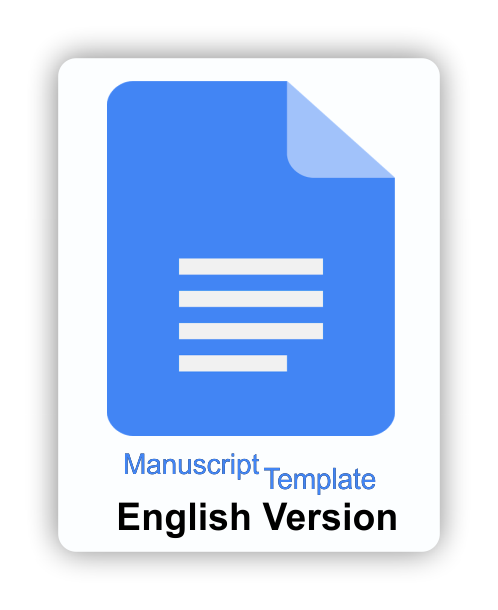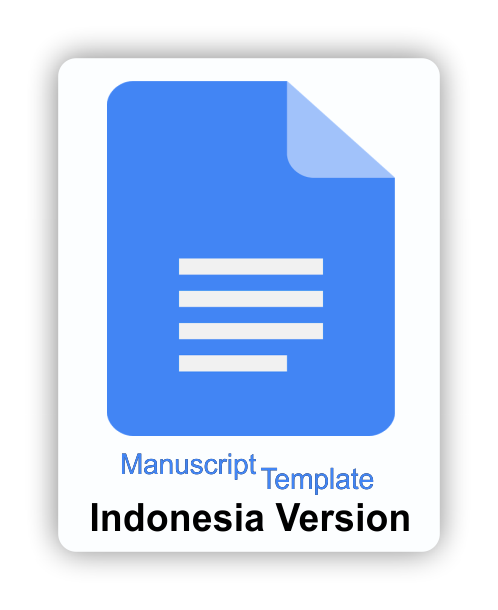Evaluasi pelaksanaan co-teaching blended learning bahasa Inggris bidang kewarganegaraan
Siti Awaliyah, Department of Law and Citizenship, Universitas Negeri Malang, Indonesia
Abstract
Penelitian ini bertujuan memaparkan perancangan, pelaksanaan, dan evaluasi perkuliahan Bahasa Inggris Kewarganegaraan di Universitas Malang. Selain itu, penelitian ini juga menyajikan contoh lingkungan pembelajaran blended learning dengan menggunakan multimedia yang efektif untuk meningkatkan motivasi belajar mahasiswa di bidang Bahasa Inggris Kewarganegaraan. Pendekatan mixed-method digunakan untuk mengumpulkan, menyajikan, dan menganalisis data. Portofolio kegiatan instruksional dan kuisioner adalah bentuk data yang digunakan. Data disajikan dan dianalisis menggunakan narasi deskriptif, studi kasus, analisis dokumen, dan analisis statistik deskriptif. Hasil penelitian menunjukkan kolaborasi dalam bentuk co-teaching blended learning dapat meningkatkan kualitas pembelajaran. Kedua instruktur yang terlibat dalam kolaborasi dapat saling mendukung untuk mencapai tujuan pembelajaran. Selain diperlukan keahlian di dalam mengajar, instruktur juga perlu menguasai cara perancangan instruksional. Mahasiswa secara aktif bekerja secara berpasangan, berdiskusi, dan berkelompok di dalam menyelesaikan tugas pembelajaran di dalam kelas dan di Edmodo. Interaksi mahasiswa dengan materi belajar dan instruktur juga dapat difasilitasi dengan manajemen sistem belajar dan teknologi pembelajaran daring seperti VoiceThread, Skype, VSee, dan posel.
Kata kunci: blended learning, pembelajaran multimedia
Evaluating the implementation of co-teaching blended learning the English for specific purposes in civic education program
Abstract
This study reveals the design, implementation, and evaluation of the English for Specific Purposes Course in Civic Education Program at the State University of Malang. The course multimedia learning environment was designed based on the blended learning principals. This learning environment is effective to increase students’ motivation. The study applied mixed-method approaches to collect, present, and analyze data. The instructional portfolio and a questionnaire were used as data. The narrative descriptive, case study, document analysis, and descriptive statistics principals were applied to analyze and present data. The results showed that co-teaching in the form of blended learning can improve the quality of the course and students’ learning. Instructors can support one another collaboratively to achieve the learning objectives. Besides teaching skills, the instructors should acquire sufficient instructional design skills. Students were identified actively engaging in pair works, discussions, and groups’ works to complete their learning tasks in class and in Edmodo. Interactions are mediated sufficiently by the learning management system and learning technologies, such as VoiceThread, Skype, VSee, and email.
Keywords: Blended learning, multimedia learning
Keywords
Full Text:
PDFReferences
Adzharuddin, N. A., & Ling, L.H. (2013). Learning Management System (LMS) among University Students: Does it work?. International Journal of e-Education, e-Management and e-Learning, 3(3), 248-252. doi:https://doi.org/10.7763/IJEEEE.2013.V3.233.
Barnett, R. (2011). Being a University. Oxon: Routledge.
Basta, J. (2011). The role of the communicative approach and cooperative learning in higher education. Linguistic and Literaturee, 9(2), 125-143.
Bronfenbrenner, U. (1979). The ecology of human development: experiments by nature and design. Cambridge, Massachusetts: Harvard University Press.
Bronfenbrenner, U. (1994). Ecological models of human development. In International Encyclopedia of Education, Vol. 3, 2nd edition. Oxford: Elsevier.
Candlin, C. N., & Mercer, N. (Eds.). (2001). English language teaching in its social context: a reader. Abingdon: Routledge.
Creswell, J. W. (2014). Research design qualitative, quantitative, and mixed methods approached, 4th edition. Los Angeles: Sage.
Dick, W., Carey, L., & Carey, J. O. (2014). The systematic design of instruction, 8th edition. Boston: Allyn and Bacon.
Drothler, R. (2002). 50 activities to promote language learning. https://www.advantagespeech.com/resources/Activities%20to%20Promote%20Language%20Learning.pdf (diakses 14 Mei 2018).
El-Mowafy, A., Kuhn, M., & Snow, T. (2013). Blended learning in higher education: current and future challenges in surveying education. Educational Research, 23(2), 132-150.
Farias, M., Obilinovic, K., Orrego, R., (2007). Implications of multimodal learning models for foreign language teaching and learning. USA: Colombian Applied Linguistics.
Friend, M. (2008). Co-teaching: principles, practices and pragmatics. Greensboro, NC: Marilyn Friend, Inc.
Friend, M. (2016). Co-teaching: Creating Success for ALL Learners. Supplemental Materials for the Workshop Council for Exceptional Children and the San Mateo County Office of Education. Wisconsin: Marilyn Friend, Inc.
Garrison, D. R., & Kanuka, H. (2004). Blended learning: uncovering its transformative potential in higher education. Internet and Higher Education, 7(2), 95-105. doi:https://doi.org/10.1016/j.iheduc.2004.02.001
Gibson, J., J. (1979). The ecological approach to visual perception. Psychology Press.
Hamdan, A. R., Anuar, M. K, & Khan, A. (2016). Implementation of co-teaching approach in an inclusive classroom: overview of the challenges, readiness, and role of special education teacher. Asia
Pacific Education Review, 17(2), 289-298. doi:https://doi.org/10.1007/s12564-016-9419-8.
Hanusch, F., Obijiofor, L. & Volvic, Z., (2009). Theoretical and practical issues in team-teaching a large undergraduate class. International Journal of Teaching and Learning in Higher Education, 21(1), 66-74.
Harkonen, U. (2007). The Bronfenbrenner Ecological System Theory of Human Development. International Conference Person Color Nature Music. Daugavpils University, Saule, Latvia. 1- 19.
Ju, F. (2013). Communicative Language teaching (CLT): A critical and Comparative Perspective. Theory and Practice in Language Studies, 3(9), 1579-1583. doi:https://doi.org/10.4304/tpls.3.9.1579-1583.
KemalRamani, A., Zhang, J., Wang, X., Rathbun, A., Corcoran, L., & Diliberti, M., (2018). Student Access to Digital Learning Resources Outside of the Classroom. National Center for Education Statistics Report.
Klapper, J., (2006). Understanding and developing good practice: language teaching in higher education. London: CILT.
Klopfer, E., Osterweil,S., Groff, J., & Haas, J., (2009). Using the Technology of Today in the Classroom Today: the Instructional Power of Digital Games, Social Networking Simulations and How teachers can Leverage Them. Massachusetts: The Education Arcade Massachusetts Institute of Technology.
Liu, I. C., & Sayer, P. (2016). Reconciling pedagogical beliefs and teaching practices: chinese teachers and the pressures of a U.S. High School foreign language context. The Journal of Language Teaching and Learning, 6(1), 1-19.
Moore, M. G. (2009) Editorial: three types of interaction. American Journal of Distance Education, 3(2), 1-7. doi:https://doi.org/10.1080/08923648909526659.
Okeke, F. N. (2013). Management of facilities in the classroom. Journal of Emerging Trends in Educational Research and Policy Studies, 4(1), 100-104.
Rosenshine, B., & Meister, C. (1992). The use of scaffolds for teaching in higher-level cognitive strategies. Educational Leadership, 49(7), 26-33.
Sejzi, A., A., & Aris, B. (2013, October). Learning Management System (LMS) and Learning Content Management System (LCMS) at Virtual University. The 2nd International Seminar on Quality and Affordable Education. Johor Bahru, Johor, Malaysia.
Sheerman, B. (2010). Transforming education outside the classroom. London: House of Commons - The Stationery Office Limited.
Shyamlee, S.D., & Phil, M. (2012). Use of technology in english language teaching and learning: an analysis. International Conference on Language, Medias and Culture, 33, 150 -156.
Stark, E., (2015). Co-teaching: the benefits and disadvantages. Journal on Best Teaching Practices, 2(2), 7-8.
Texas Education Agency. (2010). Co-teaching: guideline for co-teaching in Texas. Texas: Texas Education Agency. https://projects.esc20.net/upload/page/0102/docs/CoTeachingAccessible.pdf (diakses 14 Mei 2018).
The Herridge Group. (2004). The use of traditional instructional systems design models for e-learning. http://www.herridgegroup.com/pdfs/The%20use%20of%20Traditional%20ISD%20for%20eLearning.pdf (diakses 12 Mei 2018).
Umeh, A. E., & Nsofor, C.C., (2014). Modern trends in the use of educational technology in the classroom. International Journal of Education Learning and Development, 2(5), 73-74.
Vygotsky, L. S. (1967). Play and its role in the mental development of the child. Soviet Psychology, 5(3), 6–18.
Yang, J. (2018). On teachers’ role in CALL-an ecological language perspective. US-China Foreign Language, 16(1), 25-29. doi:https://doi.org/10.17265/1539-8080/2018.01.002.
DOI: https://doi.org/10.21831/jitp.v6i1.19701
Refbacks
- There are currently no refbacks.
Copyright (c) 2019 Hery Yanto The, Siti Awaliyah

This work is licensed under a Creative Commons Attribution-ShareAlike 4.0 International License.
Our journal indexed by:
View Journal Statistics


















.png)